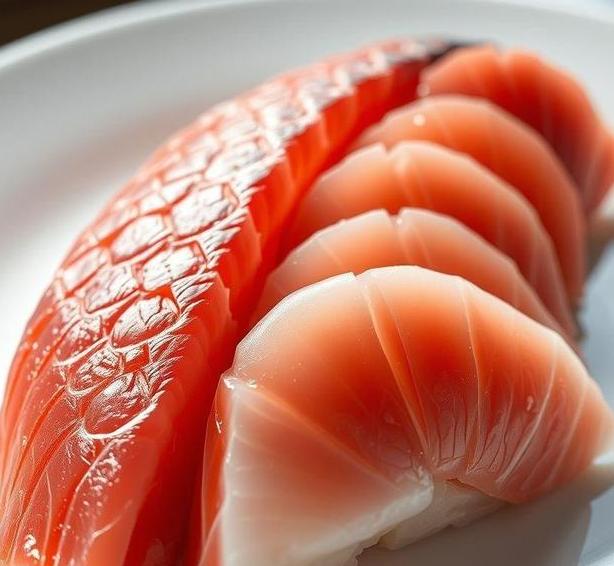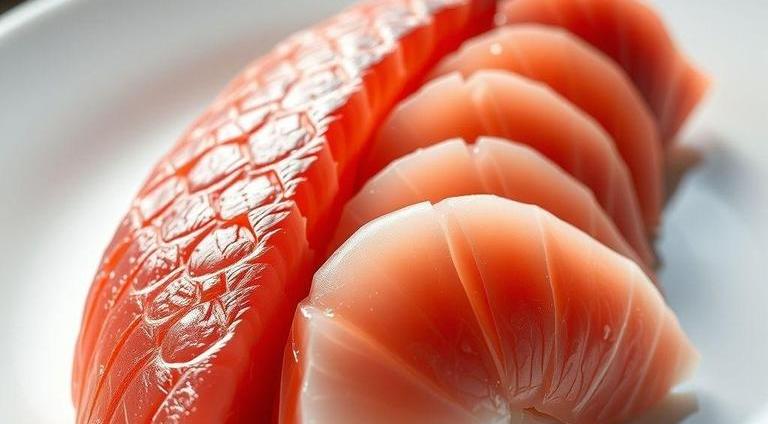Sushi grade fish is a term we’ve all likely heard when browsing through menus at our favorite sushi spots or shopping at a local seafood market. But what does "sushi grade" actually mean? It’s a label that signifies the fish is of the highest quality, ideal for raw consumption. But just because it’s called “sushi grade”, does that mean it’s impervious to spoilage? The short answer is no-sushi-grade fish can still go bad, and when it does, it can lead to some pretty unpleasant consequences.
When you’re handling fish that’s meant to be eaten raw, understanding how to keep it fresh is key. The stakes are higher because raw fish, if mishandled or stored improperly, can harbor bacteria, parasites, or even dangerous toxins. So, let’s dive into everything you need to know about sushi-grade fish, its shelf life, how to store it, and what signs of spoilage to watch out for.
Can Sushi Grade Fish Go Bad?
Yes, absolutely. Despite its high quality, sushi grade fish is still perishable, and if not properly handled or stored, it can spoil just like any other fish. The term "sushi grade" is more of an indication of freshness and the fact that the fish has been frozen at specific temperatures to kill off parasites that could harm us. But it doesn’t mean the fish is immune to time or improper storage conditions.
Sushi-grade fish is typically handled with the utmost care-from how it’s caught to how it’s stored, and even to how it’s cut. However, none of these methods make it invincible. Over time, exposure to the elements, improper refrigeration, or contamination can lead to spoilage.
Shelf Life For Sushi Grade Fish

When we’re talking about the shelf life of sushi grade fish, it’s a delicate balance. The fish is only as fresh as the moment it was caught and prepared. And once it’s brought home, it starts to lose its peak freshness.
- Fresh, Raw Sushi Grade Fish: If kept at a proper temperature (32°F or 0°C), it’s best to consume the fish within 24-48 hours. The clock starts ticking as soon as the fish is caught or delivered, so the sooner you use it, the better.
- Frozen Sushi Grade Fish: If you purchase sushi-grade fish that has been frozen, the shelf life extends a bit. Frozen sushi-grade fish can stay safe in your freezer for up to 6 months. However, the texture and quality may begin to degrade the longer it’s frozen, especially after it’s been thawed.
Common Signs Of Spoilage
There are several telltale signs that your sushi-grade fish has gone bad. Being vigilant about the freshness of your fish can save you from both ruining a meal and avoiding potential foodborne illness.
- Smell: Fresh sushi-grade fish should have a clean, ocean-like scent. If you smell anything off, sour, or overly fishy, it’s a red flag that the fish has started to spoil. A rancid or ammonia-like smell is especially concerning.
- Color: Fresh fish should have vibrant, bright colors-whether it’s the ruby red of tuna, the deep orange of salmon, or the pale pink of snapper. If the color starts to look dull, gray, or discolored, it might be starting to break down. Additionally, the flesh should be firm, not mushy or soft.
- Texture: The texture of sushi-grade fish should be firm and slightly springy. If you press your finger into the flesh and it leaves an indentation or feels mushy, it’s a sign of spoilage.
- Sliminess: A little bit of natural moisture on fish is normal, but if the fish develops a slimy coating or feels excessively wet, it’s a sign of bacterial growth.
- Cloudy or Opaque Flesh: When the fish’s flesh turns from translucent to opaque, it’s a sign that the fish is beginning to spoil. This is especially noticeable in white fish like halibut or snapper.
- Presence of Ice Crystals (in Frozen Fish): If you thaw frozen sushi-grade fish and find a lot of ice crystals or freezer burn, it’s a sign that the fish wasn’t stored properly and its quality may have degraded. It may still be safe to eat, but it won’t have the same texture or flavor.
How To Store Sushi Grade Fish?

Proper storage is key to preserving sushi-grade fish. If you want to keep it as fresh as possible, here are a few guidelines to follow:
- Refrigeration: The most crucial step in storing fresh sushi-grade fish is keeping it at the right temperature. Store it in the coldest part of your fridge (usually at the back) and ensure it stays at or near 32°F (0°C). Ideally, place the fish on a shallow pan or a plate, and cover it loosely with wax paper or plastic wrap, but don’t let it touch the wrapping too much. Keeping it on ice is also an excellent way to keep it cold if you’re not planning to use it immediately.
- Freezing: If you’re not going to consume the fish within 1-2 days, freezing is the next best option. Freezing sushi-grade fish is often a requirement for killing off potential parasites, so when you buy it frozen, it’s best to keep it that way until you’re ready to use it. When freezing, wrap the fish tightly in plastic wrap or vacuum-sealed bags to prevent freezer burn.
- Avoid Direct Contact with Water: When storing raw fish, avoid washing it or letting it sit in water, as this can promote bacterial growth. Always store the fish on a dry surface.
- Thawing Frozen Fish: When you’re ready to use frozen sushi-grade fish, thaw it slowly in the fridge overnight. Avoid thawing it at room temperature or using hot water, as this can cause the fish to break down and lose its delicate texture.
Expert Tips
Here are some pro tips to get the best out of your sushi-grade fish:
- Check for Certification: Not all fish sold as sushi-grade is guaranteed to meet safety standards. Look for reputable sources, particularly those that follow strict freezing protocols to kill parasites.
- Buy Fresh and Use Quickly: Whenever possible, buy your sushi-grade fish from a trusted supplier with a fast turnover. This ensures you get the freshest fish available. Don’t buy too much in advance; instead, purchase smaller amounts that you can consume within a day or two.
- Keep It Covered: When storing fish in the fridge, always cover it loosely with parchment paper or plastic wrap. This helps prevent exposure to contaminants while allowing the fish to “breathe”.
- Use a Fish Smell Test: If you’re unsure whether the fish is still good, try the smell test. Fresh sushi-grade fish should never have an overwhelmingly fishy odor-if it does, it’s a good idea to avoid it.
- Know When to Cut: Sushi-grade fish is delicate, and it’s best to cut it just before serving. The longer it sits cut, the quicker it will begin to degrade. It’s better to slice it right before serving to preserve texture and flavor.
FAQs
What Does ’sushi Grade’ Fish Mean?
Sushi grade fish refers to fish that is considered safe to eat raw, due to its freshness and proper handling. This term typically implies that the fish has been frozen to specific temperatures to kill parasites before being served raw in sushi or sashimi dishes.
Can Sushi Grade Fish Go Bad?
Yes, sushi grade fish can go bad if not stored properly or if it is kept for too long. Despite its high quality and preparation for raw consumption, it is still perishable and should be consumed quickly to avoid bacterial growth and spoilage.
How Long Can Sushi Grade Fish Stay Fresh?
Sushi grade fish should be consumed within 24-48 hours of being purchased if kept at proper refrigeration temperatures. Freezing the fish at the time of purchase can extend its shelf life, but even frozen sushi grade fish should be consumed within a few weeks for optimal freshness.
What Temperature Should Sushi Grade Fish Be Stored At?
Sushi grade fish should be stored at a temperature between 32°F (0°C) and 39°F (4°C) in a refrigerator. If you’re freezing the fish, it should be stored at a temperature of -4°F (-20°C) or lower to ensure it reaches the necessary freezing point to kill parasites.
What Are The Signs That Sushi Grade Fish Has Gone Bad?
Signs that sushi grade fish has gone bad include a sour or off smell, a slimy texture, discoloration (such as brown or dull spots), and a mushy or soft feel when touched. If the fish has any of these characteristics, it is no longer safe to eat.
Can I Eat Sushi Grade Fish After It’s Been Frozen?
Yes, sushi grade fish can still be safe to eat after being frozen, as freezing kills parasites. However, the texture and taste may change slightly. It’s essential to thaw the fish properly in the refrigerator before consuming it to maintain quality.
Does Sushi Grade Fish Have A Longer Shelf Life Than Regular Fish?
Sushi grade fish generally has a shorter shelf life than frozen or cooked fish, as it must be kept fresh for raw consumption. While it undergoes rigorous handling to ensure safety, it still requires prompt consumption and careful storage to avoid spoilage.
How Should Sushi Grade Fish Be Thawed After Freezing?
Sushi grade fish should be thawed slowly in the refrigerator to preserve its texture and prevent the growth of bacteria. Never thaw it at room temperature, as this can lead to bacterial contamination.
Can Sushi Grade Fish Be Stored In The Freezer Indefinitely?
No, sushi grade fish should not be stored in the freezer indefinitely. Even though freezing extends the shelf life, it is best to consume it within a few weeks to maintain its taste and texture. The longer it is stored, the greater the risk of degradation in quality.
Can I Eat Sushi Grade Fish That Has A ’use By’ Date?
Sushi grade fish should be eaten before the ’use by’ or ’sell by’ date printed on the packaging. If it has passed this date, there is an increased risk of spoilage and bacterial growth, making it unsafe to consume raw.